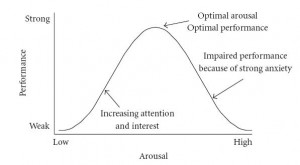What makes a digital story educational?
Tacit knowledge, as contrasted with explicit knowledge, is difficult to verbalize or otherwise explicate; falling at the opposite end of the knowledge-management spectrum as explicit knowledge (Binney, 2001). The hallmark of academia is the ability to explicitly defend and supports one’s own propositions; but for fields beyond academia this results in a catch-22 in terms of how to draw out the tacit knowledge of experienced individuals to support the training and development of the less experienced. Well-designed digital stories can support this goal (Cinciolo, Prevou, Cianciolo & Morris; 2007).
Through the course of ETEC565A, students are asked to consider a variety of text-based narrative scenarios. These scenarios are predominantly problem-based, although an inquiry-based scenario was also included early in the course (Egan, 2011). These scenarios generate plenty of discussion due to the nature of their vagueness: there are many contextual factors that must be considered to provide solutions, and depending on the background and experiences of the MET student, the myriad of grey areas and contextual considerations may be weighted with more or less importance. These experiences support learning in a social environment, and in an academic setting; such grey areas in educational storytelling provide a contextually-rich environment that supports deep personal reflection as well as productive critiques of other’s generalizations (Branaghan, 2010).

The often mis-cited Hebbian variation of the Yerkes-Dodson law. Click on the image for more information.
Cianciolo, Prevou, Cianciolo and Morris (2007) identify this contextual gradation as a hallmark of effective digital stories: drawing out a combination of relevance and controversy to the learner group as a whole. Although Cianciolo et al. (2007) focused specifically on digital storytelling in military professional forums, their reasoning may be extrapolated to professional forums in general where participants come pre-equipped with a range of explicit and tacit knowledge. According to these authors, high levels of relevance prompts high levels of participant discussion, as participants feel they have perspectives to contribute and experiences to share. Meanwhile, the presence of controversy or disagreement in the eventual solutions generates discussion as participants share both lived experience and often strongly-held beliefs. Branaghan (2010) refers to the Yerkes-Dodson law to illustrate the balance between the these two factors, or the relationship between arousal and performance, although further investigation reveals that it appears that the relationship here is often incorrectly cited as Hebbian version of this law (Wikipedia, 2010).
Cianciolo and her colleagues (2007) note that on their own, high levels of either relevance or controversy fail to provide a meaningful educational experience: high levels of solely relevance support agreement, with not much room for expansion; whereas high levels of controversy, without direct relevance, supports the sharing of opinions without the sharing of experience-based tacit or explicit knowledge (Cianciolo et al., 2007). In the end, controversy without relevance may serve to support heated debate, but does not expand upon either the student’s progress or institutional goals.
References:
Branaghan, R. (2010). What is so special about stories? The cognitive basis of contextually rich learning. In Andrews, D.H., Hull, T.D., & DeMeester, K. (Eds.) Storytelling as an Instructional Method: Research Perspectives, (pp. 12-27). Retrieved online March 04, 2014, from https://www.sensepublishers.com/media/983-storytelling-as-an-instructional-method.pdf
Binney, D. (2001). The knowledge management spectrum – understanding the KM landscape. Journal of Knowledge Management, Vol. 5 Iss: 1, pp.33 – 42. Retrieved online March 13, 2014, from http://www.emeraldinsight.com.ezproxy.library.ubc.ca/journals.htm?articleid=883722
Cianciolo, A.T., Prevou, M., Cianciolo, D., Morris, R. (2007). Using digital storytelling to stimulate discussion in Army professional forums. Paper presented at the Interservice/Industry Training, Simulation, and Education Conference (I/ITSEC). National Defense Industrial Association. (pp. 1-12). Retrieved online, March 04, 2014, from http://citeseerx.ist.psu.edu/viewdoc/download?doi=10.1.1.113.3853&rep=rep1&type=pdf
Egan, J. (2011). Active learning strategies in an online education technology applications course: The value of narratives. Paper presented at the Proceedings of Informing Science & IT Education Conference (InSITE). (pp. 1-12). Retrieved online, March 10, 2014 from https://blogs.ubc.ca/eganfcp/files/2011/12/eganinsitepaper.pdf
Wikipedia (2010). Yerkes–dodson law.Retrieved online March 15, 2014, from https://en.wikipedia.org/wiki/Yerkes%E2%80%93Dodson_law
